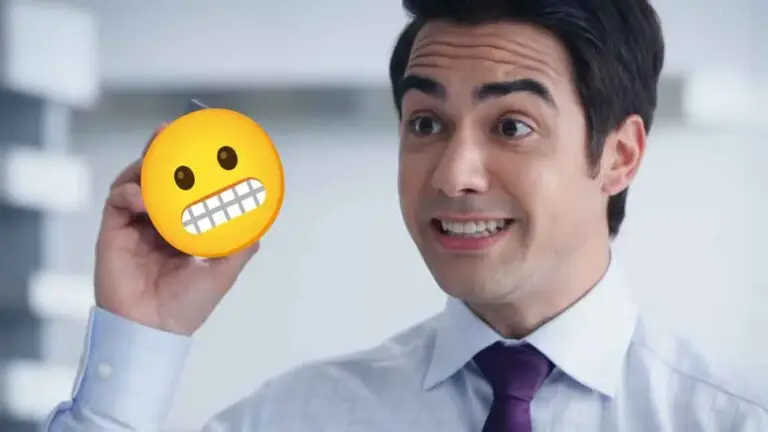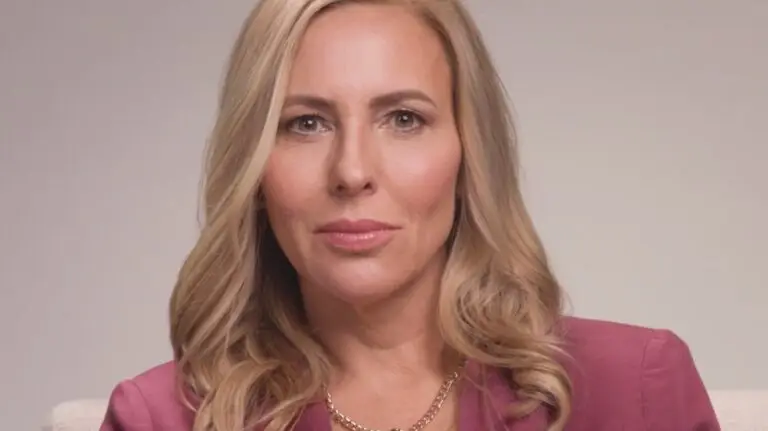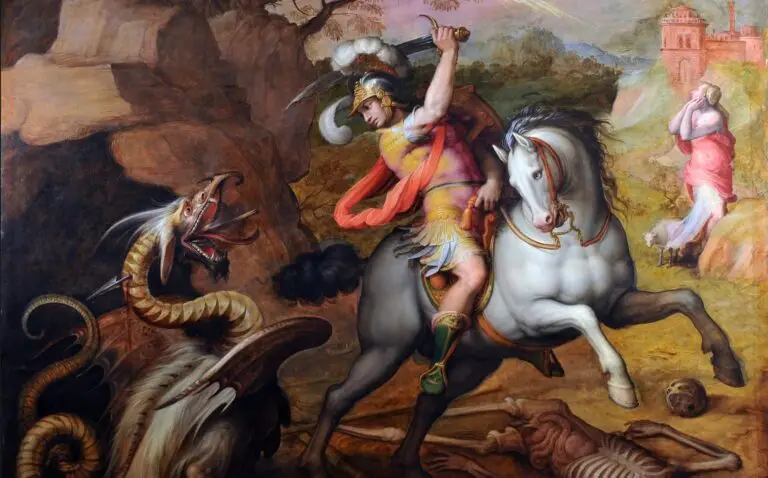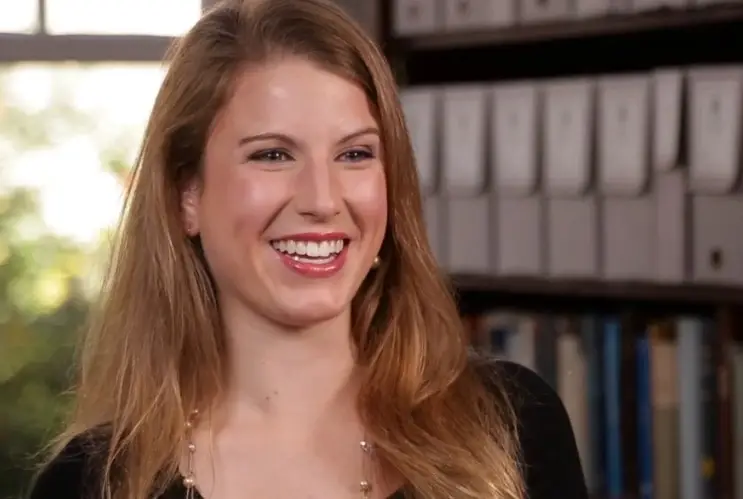Brands are putting themselves in the spotlight with feature-length documentaries.
Over the last decade, documentary films have been on the rise in popularity and profitability. Production and equipment is lighter and cheaper, and filmmakers are free to experiment in finding creative ways to tell true stories. VOD services like Netflix, Amazon Prime and iTunes are giving a growing worldwide market access to huge libraries of quality non-fiction films.
But why are audiences increasingly choosing fact over fiction? Perhaps the current dearth of realism (endless comic-book sequels and apocalyptic action movies) is forcing more discerning viewers to choose authentic storytelling over spectacular visuals and far-fetched plots… Anna Godas, chief executive of Dogwoof Pictures, Britain’s leading documentary distributor, points to a shift in film-makers’ attitudes. “Since the success of films like Michael Moore’s “Fahrenheit 9/11”, which won the Cannes Palme d’or in 2004 (unprecedented for a documentary), and Morgan Spurlock’s “Super Size Me” in the same year, I think film-makers have become more aware of how to make documentaries entertaining,” she says. Instead of picking worthy social causes and expecting people to be interested, film-makers are choosing charismatic central characters with naturally dramatic stories and presenting them in innovative, memorable ways. – The Shocking Truth – The Economist
As a producer of corporate films and branded stories, I get to work with a lot of great agencies and marketing departments. When it comes to producing a story-based profile or documentary video, one of the most common non-budget related questions I get is: “How long should our video be?” There is no shortage of studies that measure the average length of time a viewer will watch an online video before clicking away, and there are many “experts” who have determined what the perfect length of a video should be. The thing that these statistics don’t take into account is how engaging the content being watched actually is.
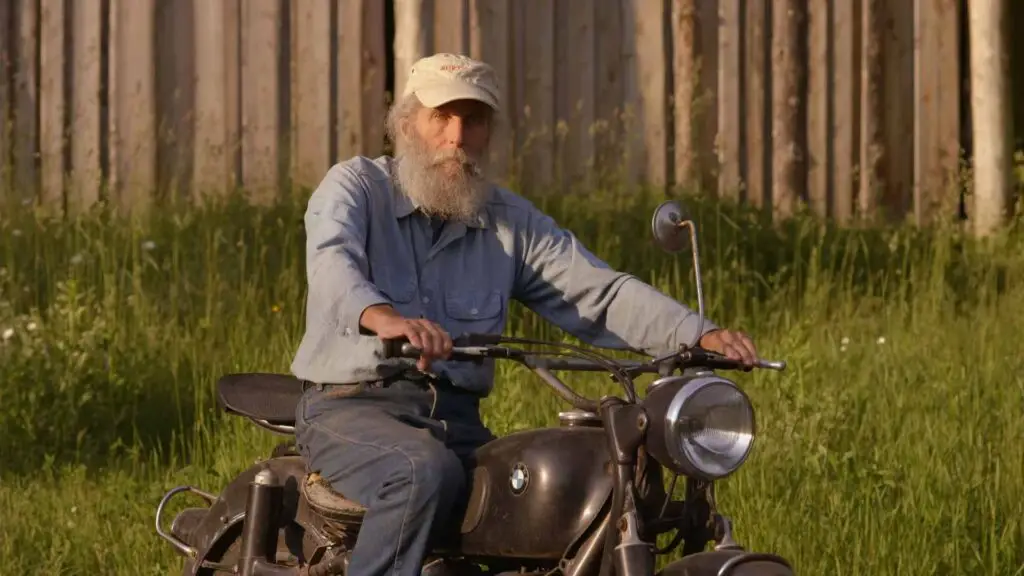
The interestingness of what is on screen is directly related to the length of time an average viewer is going to want to continue watching it. Why else would people pay to sit in a large room with strangers to watch a three-hour epic?
You may be thinking: “Sure, that may work for the Lord of the Rings, but who would ever want to watch a feature-length corporate video?”
Chances are you already have, and probably paid for the privilege.
I’m talking about branded documentaries. There is a rise in number and popularity of feature-length documentaries that are funded or produced in deep collaboration with companies looking to tell their brand story. These films often tell a story related to the company or industry in some way, and the characters usually include members or former members of the company. They might feature interviews, candid conversations, behind-the-scenes access to places and processes, stories of struggle. They may document a series of events leading up to a product release, paint an intimate portrait of a founder or employee, or offer a rich comprehensive overview of an entire industry.
A Small Section of the World
Take the coffee business for example. In December 2014, a documentary film called A Small Section of the World was released. The film is about ta a group of female entrepreneurs in Costa Rica known as the Asomobi, and their struggles in running a sustainable coffee production business. The film was bankrolled by Illy, a coffee brand who sources from them.
“It really doesn’t matter any longer if it’s branded entertainment or entertainment,” said Dominic Sandifer, Greenlight Media and Marketing president and co-executive producer. “What matters is if it’s a great story.” Getting a documentary bankrolled is harder than ever. At the same time, documentaries are in vogue thanks to the growth of online video channels like Netflix and the increasing demand for premium video content on the Web, said Marc Schiller, CEO of event and film marketing firm Bond. And brands are realizing they don’t need to plaster their logos on a film to get their company’s positioning across. –For Your Consideration: Could a Branded Documentary Bring Home the Oscar? – AdWeek
The key to creating a respectable (and watchable) branded documentary is to tread lightly with the branding, and above all keep it interesting. Great stories must have conflict, hard choices, and hopefully a character arc. The best branded documentaries often follow a character who has a goal, and must face difficult obstacles to attain it.
Page One: Inside the New York Times
The 2011 documentary Page One: Inside the New York Times follows New York Times journalist Robert Carr as he navigates the turbulent waters of journalism in the rise of the digital age.
This documentary beautifully illustrates how a brand can piggyback on an idea: “How can journalistic standards survive with the new challenges presented by a digital publishing world?”. It puts the New York Times on the right side of the line in the battle for higher standards. I don’t work for the marketing department at the New York Times, but that theme sounds right on message.
With the Internet surpassing print as our main news source and newspapers all over the country going bankrupt, PAGE ONE chronicles the transformation of the media industry at its time of greatest turmoil. Writers like Brian Stelter, Tim Arango and the salty but brilliant David Carr track print journalism’s metamorphosis even as their own paper struggles to stay vital and solvent. Meanwhile, their editors and publishers grapple with existential challenges from players like WikiLeaks, new platforms ranging from Twitter to tablet computers, and readers’ expectations that news online should be free. But rigorous journalism is thriving. PAGE ONE gives us an up-close look at the vibrant cross-cubicle debates and collaborations, tenacious jockeying for on-the-record quotes, and skillful page-one pitching that produce the “daily miracle” of a great news organization. What emerges is a nuanced portrait of journalists continuing to produce extraordinary work—under increasingly difficult circumstances. – Metacritic Summary
The September Issue
Films like The September Issue bridge the publishing industry with fashion. The film follows Vogue Editor and Chief Anna Wintour as she works with her publishing team to get the finishing touches finalized on the the upcoming September issue. Besides offering fascinating behind-the-scenes access to a magazine editing room, the story firmly establishes Wintour as the undisputed queen of fashion criticism.
Although Anna Wintour collaborated on the film, the filmmaker claims Vogue magazine did not take any part in financing the film.
Mr. Cutler, who decided he wanted to delve into the fashion world after reading about theMetropolitan Museum of Art’s Costume Institute ball, had managed rather effortlessly, all things considered, to sell Ms. Wintour, on the idea of letting him and his cameras into office corridors, fashion shoots, studio visits and even homes, and of giving him final cut.
It was even Ms. Wintour’s idea to structure the film around the making of the magazine’s September issue — the biggest single issue of Vogue ever, it turned out. (Mr. Cutler said Vogue has no stake in the movie and neither paid nor received money for its involvement.) – Imbedded at Vogue, Trying a Charm Offensive – The New York Times
A few years later, a second Vogue-centered film called Mademoiselle C was released featuring her French counterpart Carine Roitfeld.
Dior and I
Fashion brands themselves are reinventing their image and shrugging off the mysterious branding of yesteryear with documentary films. Dior and I is one recent release that follows the design team behind Dior.
Dior and I brings the viewer inside the storied world of the Christian Dior fashion house with a privileged, behind-the-scenes look at the creation of Raf Simons’ first haute couture collection as its new artistic director—a true labor of love created by a dedicated group of collaborators. Melding the everyday, pressure- filled components of fashion with mysterious echoes from the iconic brand’s past, the film is also a colorful homage to the seamstresses who serve Simons’ vision.
An obvious choice in branded documentary is to offer an “inside look”. Audiences love to see and hear from places and people they normally do not have access to. Private boardroom meetings, offices, factories, court rooms, and private homes are all fair game.
But without story, you might as well be making an episode of How It’s Made. That would be ok, too. Reality TV and news shows have been integrating brands for years. But if you want to make a compelling documentary, there will be more to the story that showing what you do.
Blood Into Wine
The documentary Blood into Wine follows Maynard Keenan, lead singer of the rock band Tool, as he launches his wine label. This film is a great example of how a documentary can completely alter perception of an otherwise mysterious brand. Maynard Keenan has never been one to portray his sensitive, business minded wine-loving side. But in this documentary, the mysterious rock star veil has been lifted.
Some of the most successful branded documentaries are not afraid to show flaws in or conflicts among characters. This takes a lot of courage on the part of the brand, both in production and in editing. Your characters must have a willingness to be filmed candidly, warts and all.
A documentary about a wine label can effectively showcase the intricate details of the winemaking process, from the careful selection of grapes to the harvesting techniques and the fermentation process. By highlighting the artistry, tradition, and innovation involved, the brand can position itself within a niche market that appreciates and values the craftsmanship and story behind each bottle. This approach can transform the wine from a simple beverage to a collector’s item or a luxury good.
Consumers are often willing to pay a premium for products they perceive as crafted rather than manufactured, especially when they feel a personal connection to the story behind them. The documentary serves as a platform to communicate these values directly to the consumer, making the wine an experience imbued with the personal touch and passion of its creators. This perceived value allows the brand to set higher price points, aligning with luxury market strategies that rely heavily on brand story and authenticity.
Burt’s Buzz
Burt’s Buzz is an example of a branded documentary that can take self-depreciation to a new level The story chronicles the early life and later business success of Burt Shavitz, founder of Burt’s Bees.
In the film, the shaggy Shavitz repeatedly talks about how the company is no longer the same company it was when he found it, and how disinterested he has become with it, and how he just wants to be left alone. Then you see him subtly enjoying his rock-star status, as he is crowded by fans in a Japanese airport. This isn’t exactly the most desirable brand message, but after viewing the film you end up more connected and aware of the brand than ever before. His face has become an icon on the label, and this is the story of that icon.
The Greatest Movie Ever Sold
The battleground for your attention is fierce out there. Companies are desperately looking for ways to get you to pay attention to them, and they want to be in the shows and movies you watch. Traditionally, you sneak into the viewer psyche with a little product placement. As demonstrated in The Greatest Movie Ever Sold, sometimes this can be a little “on the nose”.
In a bold exploration of advertising’s pervasive influence, filmmaker Morgan Spurlock embarks on a truly unique cinematic venture with “The Greatest Movie Ever Sold.” This feature-length documentary turns the spotlight on itself, as it is entirely funded through product placement, a concept that lays bare the mechanics of marketing within the film industry.
Despite facing initial setbacks with numerous companies turning down the opportunity to participate, Spurlock finds allies in brands like JetBlue Airways and Ban deodorant. These partnerships help to drive the film’s narrative while underscoring the often-blurry line between advertising and content.
Spurlock’s journey takes viewers from the ad-free streets of Sao Paulo—a city that has outlawed public commercial advertising—to the corridors of a Florida school district that has embraced in-school advertising as a financial lifeline. Through these contrasting environments, “The Greatest Movie Ever Sold” offers a critical look at the commercial forces shaping our world, questioning the impact and ethics of omnipresent advertising.
Always at the Carlyle
Always at the Carlyle is a feature-length documentary about the Carlyle Hotel in New York city. The film features interviews with well-known celebrities such as George Clooney, Angelica Huston, John Hamm, Anthony Bourdain and Jeff Goldblum sharing their experiences (and lore) at the Carlyle. Much of the film attempts to cement the perception of the Hotel as a haven for celebrities and elites who need utmost discretion during their stay.
Critics point out that the film never really delivers on it’s promise of gossip and scandalous stories.
At the start of “Always at the Carlyle” a glossy documentary about the Carlyle Hotel, employees say that they will not reveal anything about this celebrated Upper East Side landmark that has housed superstars, royalty and presidents.
It comes off as an artfully contrived tease, like the scene in the “Mission Impossible” movies in which someone goes on at length about the impenetrable security that makes a big heist so unlikely. But by the end of “Always at the Carlyle,” which is more interested in burnishing a reputation than in exploring it, the introduction seems to operate more like the ill-advised topic sentence for this superficial love letter. – The New York Times
Burnishing a reputation exactly what this film does. At the end of the day, the Carlyle is a business, and this film ticks all of the marketing boxes. We have testimonials, services, decor, history and even pricing. Audiences are left with healthy dose of FOMO and a lot of stories about the hotel and its glamorous history.
Scatter My Ashes at Bergdorf’s
Directed by Matthew Miele, “Scatter My Ashes at Bergdorf’s” peeks into the opulent world of Bergdorf Goodman, the popular luxury department store located at the corner of Fifth Avenue and Grand Army Plaza in New York City. The film, taking its quirky title from a 1990 Victoria Roberts cartoon published in The New Yorker, serves as a love letter to this beacon of high fashion.
This documentary weaves together the narratives of celebrities, fashion designers, store executives, and devoted customers, all sharing their fervent admiration for Bergdorf Goodman. Featuring insights from fashion giants like Giorgio Armani, Candice Bergen, and Manolo Blahnik, the film pulls back the curtain on the inner workings of Manhattan’s most iconic shopping destination.
By showcasing the rich history and exclusive nature of the store, the documentary elevates Bergdorf Goodman’s status in the luxury market. It aligns the brand with high-end fashion legends and celebrities, reinforcing its position as a premier, must-visit destination for anyone interested in high fashion. Again, critics were not totally pleased with the spotless way that the film portrays the brand.
Almost absent is conflict, except for a cursory account of recessionary speed bumps, the loss of clients after the Bernie Madoff scandal and the frustration of designers denied entry into the collections. The end credits offer a number from Barbra Streisand’s 1965 TV special in which she sings and dances in Bergdorf’s after hours. It’s a sequence with more charm than the rest of this brazen screen plug.
Celebrating Conspicuous Consumption – New York Times
Despite the criticism, the documentary effectively contributes to the brand’s legacy by documenting its cultural and historical significance. Even though it may have benefitted from a bit more conflict, this branded documentary serves as a visual archive that will educate future generations about the brand’s impact on the fashion industry.
LANDLINE. A Vans Snowboarding Film
“Landline,” Vans’ first full-length snowboarding documentary, provides an intriguing case study in branded content marketing, particularly in how transparency in its production and purpose can impact audience reception and brand perception.
It features an array of talent from the snowboarding world, including well-established pros, emerging talents, and the true trailblazers who have shaped the sport. This diverse lineup ensures that the film encapsulates the spirit and evolving culture of modern snowboarding. Through its authentic and unpolished visual style, “Landline” not only highlights the athletic prowess of its stars but also digs deep into the vibrant, unconventional lifestyle that defines snowboarding communities worldwide.
The artistic choice to shoot on Kodak 16mm film adds a layer of authenticity and grittiness to the documentary, which resonates well with the snowboarding community that values both tradition and rebellious, off-the-beaten-path experiences. This stylistic decision aligns with Vans’ brand ethos of originality and rugged individualism, reinforcing the company’s image and appeal among its core demographic.
By embracing its identity as a Vans creation, “Landline” benefits from a clear, unapologetic presentation of its ties to the brand. This transparency likely enhances viewer trust, as there is no pretense of being anything other than what it is—a brand-sponsored exploration of snowboarding culture. In a marketing sense, this honesty can actually strengthen viewer engagement. Audiences know from the outset that they are getting a film that aligns with Vans’ cultural footprint and are thus more receptive to the messaging.
Conclusion
The line between marketing, journalism and entertainment isn’t getting any sharper, and branded documentaries are no exception. The cardinal rule of entertainment is don’t bore people. It doesn’t take an ethics major to see how non-fiction film expectations may clash with marketing agendas. As filmmakers and brands become better at mixing movies with messaging, it will become almost impossible to tell if you just watched an hour and a half long commercial. Maybe you wont care.
